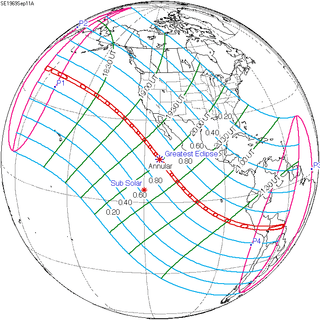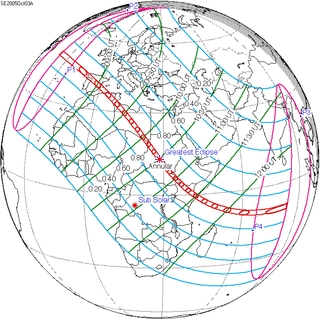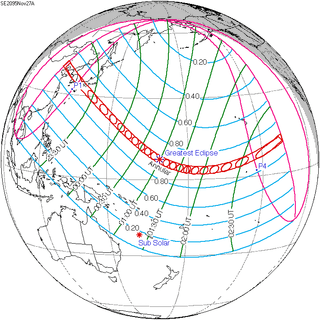Solar eclipse of November 5, 2059
| Solar eclipse of November 5, 2059 | |
|---|---|
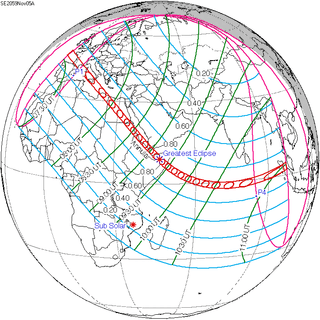 Map | |
| Type of eclipse | |
| Nature | Annular |
| Gamma | 0.4454 |
| Magnitude | 0.9417 |
| Maximum eclipse | |
| Duration | 420 sec (7 m 0 s) |
| Coordinates | 8°42′N 47°06′E / 8.7°N 47.1°E |
| Max. width of band | 238 km (148 mi) |
| Times (UTC) | |
| Greatest eclipse | 9:18:15 |
| References | |
| Saros | 134 (46 of 71) |
| Catalog # (SE5000) | 9641 |
An annular solar eclipse will occur on November 5, 2059. A solar eclipse occurs when the Moon passes between Earth and the Sun, thereby totally or partly obscuring the image of the Sun for a viewer on Earth. An annular solar eclipse occurs when the Moon's apparent diameter is smaller than the Sun's, blocking most of the Sun's light and causing the Sun to look like an annulus (ring). An annular eclipse appears as a partial eclipse over a region of the Earth thousands of kilometres wide.
Related eclipses
Solar eclipses 2059-2061
Each member in a semester series of solar eclipses repeats approximately every 177 days and 4 hours (a semester) at alternating nodes of the Moon's orbit.
| 119 | May 22, 2058 Partial |
124 | November 16, 2058 Partial |
| 129 | May 11, 2059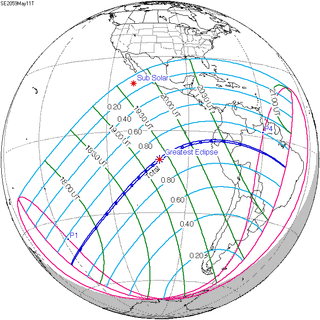 Total |
134 | November 5, 2059 Annular |
| 139 | April 30, 2060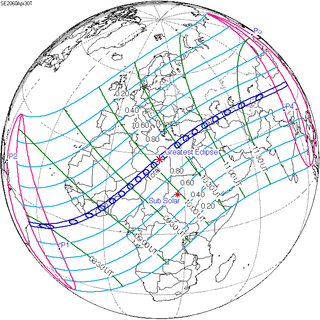 Total |
144 | October 24, 2060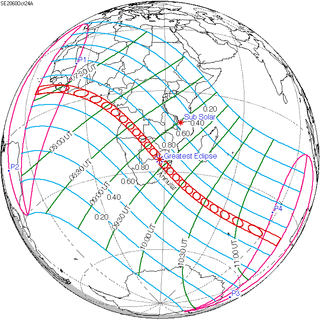 Annular |
| 149 | April 20, 2061 Total |
154 | October 13, 2061 Annular |
Saros 134
It is a part of Saros cycle 134, repeating every 18 years, 11 days, containing 71 events. The series started with partial solar eclipse on June 22, 1248. It contains total eclipses from October 9, 1428 through December 24, 1554 and hybrid eclipses from January 3, 1573 through June 27, 1843, and annular eclipses from July 8, 1861 through May 21, 2384. The series ends at member 71 as a partial eclipse on August 6, 2510. The longest duration of totality was 1 minutes, 30 seconds on October 9, 1428.[1]
Series members 38-48 occur between 1901 and 2100:



